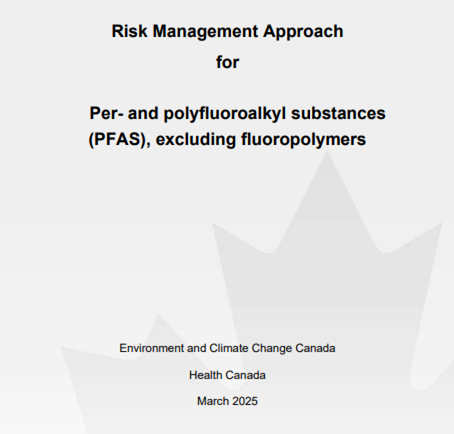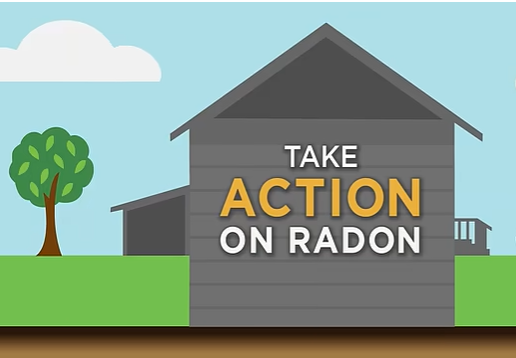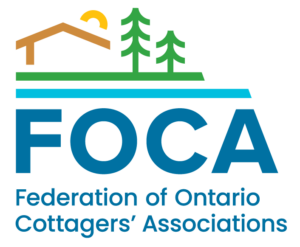
The Great Lakes Basin ecosystem is threatened by a variety of pollution issues and potential chemical threats.

There has been slow progress on Great Lakes toxins and pollutants. Despite the signing of the revised Great Lakes Water Quality Agreement (GLWQA) in 2015, there has been only modest progress on the provisions to deal with chemicals in the Great Lakes basin ecosystem, which continue to pose a threat to human health and the environment.

July 23, 2025 – Toxic chemicals are flowing into the Great Lakes and St. Lawrence River — and they’re showing up in drinking water (CBC News interactive story)
Read more about PFAS chemicals, below.
Related News:
May/June 2025 – PFAS Treatment: A New Era (Water Canada) – excerpts: …in late March the council of West Nipissing in northern Ontario voted for a little extra PFAS testing at the water treatment plant because of concerns about leachate from the nearby landfill. …the City of North Bay is now exploring options to upgrade its water treatment plant to treat PFAS, even though there is no funding yet available.
October 3, 2024 – webinar in the Itasca “Practical Water Wisdom” Series: PFAS in Water: How did they get there and why are they so challenging? (YouTube)
September 2024 – PFAS: New Regulations and Innovative Solutions (Water Canada) – possible approaches to address the contamination of groundwater in situ at lower costs.
July 11, 2024 – US EPA Releases New Science-Based Recommendations to Reduce Exposure to PFAS in Fish (EPA.gov) – the US Environmental Protection Agency has published updated regulations suggesting US States monitor for twelve PFAS and other contaminants including lead, cyanotoxins, a flame retardant, and amphetamine. Read more about PFAS, below.
June 4, 2024 – Drugs, microplastics and forever chemicals: new contaminants emerge in the Great Lakes (The Narwhal) – “Scientists studying unregulated ’emerging contaminants’ say Ontario and the federal government need a co-ordinated plan to protect our water and health” …”In Canada, no rule or law to prevent emerging contaminants from entering our water…”
May 11, 2024 – Forever chemicals in North Bay and across Canada: “Millions of Canadians have been exposed to potentially toxic chemicals, and they’re not going anywhere” (CTV News).
Read onward, or jump directly to one of these sub-topics:

You can be part of the solution for waterfront Ontario, by making good choices at your waterfront! Here are some ideas to get you started:
- rethink your use of fertilizers and pesticides
- prevent gasoline from polluting the water
- create a natural shoreline to prevent run-off from reaching the lake
- dispose of hazardous waste properly
- read up on light and noise pollution, and work to reduce your use of plastics.
This video from 2010 by FOCA about Pollution Prevention, still has great information worth sharing on a variety of topics ->
Toxins in our water:
FOCA was signatory to a letter sent in 2015 (PDF, 8 pages) to the Great Lakes representatives of Environment Canada and the U.S. Environmental Protection Agency, encouraging better progress on identifying and taking action on Chemicals of Mutual Concern.
The letter, authored by the Canadian Environmental Law Association (CELA), was signed by more than 20 interested health and environmental groups from both sides of the border, including FOCA. The letter emphatically states that progress must be accelerated to identify, prioritize, and act on the threats posed by these chemicals. Along with the letter, CELA provided a detailed background report, “Advancing Prevention of Toxic Chemicals in the Great Lakes Basin: An ENGO perspective on current binational efforts.” (PDF; 52 pages)
Within the stated purposes of “Annex 3” of the GLWQA are obligations for both nations to protect human health and the environment, recognizing that these chemicals, when released into the air, water, land, sediment, and biota should not result in impairment to the quality of the Waters of the Great Lakes; and, the need to manage chemicals by implementing measures to achieve virtual elimination and zero discharge of these chemicals.
This includes known toxins and persistent chemicals, but also emerging classes of chemicals of potential concern, including pharmaceuticals and personal care products that could adversely affect the health of the Great Lakes basin ecosystem.
Update from 2017:
Several improvements have been recommended to the planned management and elimination of PCB’s, and HBCD’s (Flame Retardants) in the Great Lakes, by a coalition of NGO’s from Canada and the U.S., including FOCA.
According to this letter (download link is below), the proposed management of these “chemicals of mutual concern(CMC)” can be improved by including:
- targets related to the reductions, and targets for how much each of the planned measures will take us towards those goals
- reference to how the proposed measures and strategies address the goals of virtual elimination and zero discharge in the Great Lakes Water Quality Agreement (GLWQA) (a fundamental commitment that Canada and the U.S. made when they signed the CMC commitments in Annex 3 of the GLWQA)
- a legislative and regulatory gap analysis, which could reveal needs and opportunities to review or identify other laws or regulations required to adequately address the CMCs
- timelines; the lack of specific reduction timelines creates uncertainty in the governments’ efforts, and makes it impossible to hold the governments accountable to their commitments.
Read the whole submission in the NGO Submission on Binational Strategies for PCBs and HBCD (PDF, 24 pages)
Triclosan:
In 2019, the Government of Canada concluded that triclosan is toxic to the environment. Triclosan is a chemical found in a wide range of household products like toothpaste or soap, and can pose a risk to living things in the water, like plants and fish, when these products are washed down the drain.
The YouTube video at the side, about triclosan, was created by Ottawa Riverkeeper in 1998.
Canada regulates cosmetics, non-prescription drugs, and natural health products to minimize the amount of triclosan, but has not yet banned it, although it meets the criteria set out in section 64(a) of the Canadian Environmental Protection Act, 1999. Triclosan has been detected in drinking water, breast milk and household dust.
From 2014 through 2018, FOCA joined our colleagues at the Canadian Environmental Law Association (CELA) and over 50 public interest organizations in calling for a ban on triclosan in consumer products, to protect the environment and human health. As stated in a 2018 letter from concerned organizations, “We are concerned that the government is missing a significant opportunity to address the impact of triclosan on human health, its contribution to antibiotic-resistance, and its toxic break-down products to the environment.”
In 2017, FOCA and other environment and health groups called on the Canadian government to:
- Officially declare triclosan to be toxic under CEPA, 1999;
- Implement a phase-out of triclosan in all consumer and institutional products, with priority given to cleaning and personal care products, with mandatory product labelling
- Adopt a framework of Informed Substitution and ensure that Triclocarban, a similar chemical, is prohibited so that industry does not adopt a regrettable substitution and require transparent alternatives assessments if chemical biocides are shown to be necessary in specific cases.
Download the Environment and Health Groups’ Statement on Triclosan, signed by CELA, FOCA and others (February 2017; PDF, 16 pages)
PFAS (per- and polyfluoroalkyl substances):
March 2025 – the federal government has released a report on the state of per- and polyfluoroalkyl substances (PFAS), concluding that PFAS – excluding fluoropolymers – are harmful to human health and the environment. Access the PFAS report, background, and the public comment period details on Environment and Climate Change Canada webpages. Public comment on the government’s risk management approach for PFAS is open until May 7, 2025.

January 2025 – Researchers have developed a way to break down long-lasting PFAS compounds using light (The Water Network – source of the image at side, by Miyake Group) – an excerpt: “Conventional water treatment methods can remove PFAS from water, but these processes merely concentrate the contaminants instead of destroying them.” A new method uses a photocatalyst to speed up a chemical reaction using cheap blue LED light.

April 11, 2024 – US EPA has limited six ‘forever chemicals’ in drinking water – but there are 15,000 (TheGuardian.com) although diet may be a larger source of exposure to PFAS for humans
February 2023 – As recently reported by Dr. Luxmy Begum in Water Canada magazine, per- and polyfluoroalkyl substances (PFAS) are a group of human-made compounds that are used as surfactants, lubricants, repellents (for dirt, water, and grease) and can be found in certain firefighting foams, textiles (including carpets, furniture, and clothing), cosmetics, and in food packaging materials. They are also used in a variety of other industries, including aerospace, automotive, construction, electronics, and military.
PFAS are made up of a carbon chain with at least one carbon atom that has two or three fluorine atoms attached to it, creating an incredibly strong carbon-fluorine bond that results in chemical that do not easily degrade in the environment. Because of this property they are known as forever chemicals.
PFAS compounds pose various health risks to human and biotas, including disruption to the immune system and liver function, increased risk of thyroid disease and blood cholesterol levels, and cancer.
Asbestos
Asbestos, a known carcinogen, has been condemned by the World Health Organization and is banned in some 50 countries around the world. Asbestos was mined in Canada from the late 1800s until 2011.
FOCA was one of 68 signatories on a 2016 letter (PDF, 25 pages) sent to the Canadian Prime Minister, urging a ban on asbestos and the establishment of an expert panel review on asbestos.
In 2018, the Government of Canada prohibited the import, sale and use of asbestos or products containing asbestos; however, exclusions were made for its use by permit in a nuclear facility or to services military equipment until the end of 2022, or in chlor-alkali facilities until the end of 2029.
For historical data about asbestos, see this article: Asbestos in the Great Lakes Basin with Emphasis on Lake Superior (IJC, 1975; posted by University of Windsor)
Radon
Radon is a radioactive gas that comes from the breakdown of uranium in soil and rock. Radon can be found in groundwater from private wells, too. Learn more from Health Canada.
The longer people are exposed, the greater their risk of lung cancer. If your residence has a finished basement, testing over at least 3 months is important, as indoor radon levels can vary a lot from day to day or week to week, but tend to be highest during the heating season.

Some Public Health Units offer free or discounted radon test kits for local residents, while other recommend purchasing a do-it-yourself test kit from your local hardware store. The Canadian National Radon Proficiency Program (C-NRPP) recently released a consumer guide to the various electronic radon monitors available on the Canadian market.
November is Radon Gas Awareness Month
Radon is invisible, odourless and tasteless. In enclosed spaces like homes, it can accumulate to high levels and be a health risk. Learn more from the Government of Canada.
Because there are so many factors, it is not possible to predict the Radon level in a home; the only way to know for sure is to test.
November 28, 2019 – Should Ontarians be worried about radon? Colourless, odourless, and plentiful: Why Kingston is warning residents about radon (TVO)

Please note: the following is archival material, and some links to third-party resources may no longer be active.
March 2022 – Restoring the Great Lakes – sensitive to pollutants (EPA)
September 27, 2016 – Exactly How Much Plastic Is Floating In Great Lakes Might Surprise You (Time Warner Cable News)
September 28, 2016 – Washing Out Antibacterial Soap The U.S. FDA is banning many of the ingredients found in antibacterial soaps, such as triclosan and triclocarbin, citing concerns over the safety and effectiveness of the chemicals for consumer use. The Agenda discusses the prevalence of these chemicals in consumer products, and whether Canada should follow the American lead. (Video)(TVO – The Agenda)
September 6, 2016 – FDA will ban antibacterial ingredients from soaps. What about Canada? (The Globe and Mail)
September 2, 2016 – U.S. FDA Bans 19 Chemicals Used In Antibacterial Soaps (NPR News)
As this June 22, 2015 editorial from the Toronto Star points out, the future of the Great Lakes is vital to the well-being of millions of Canadians and Americans, and that demands deeper and more vigorous protection.
